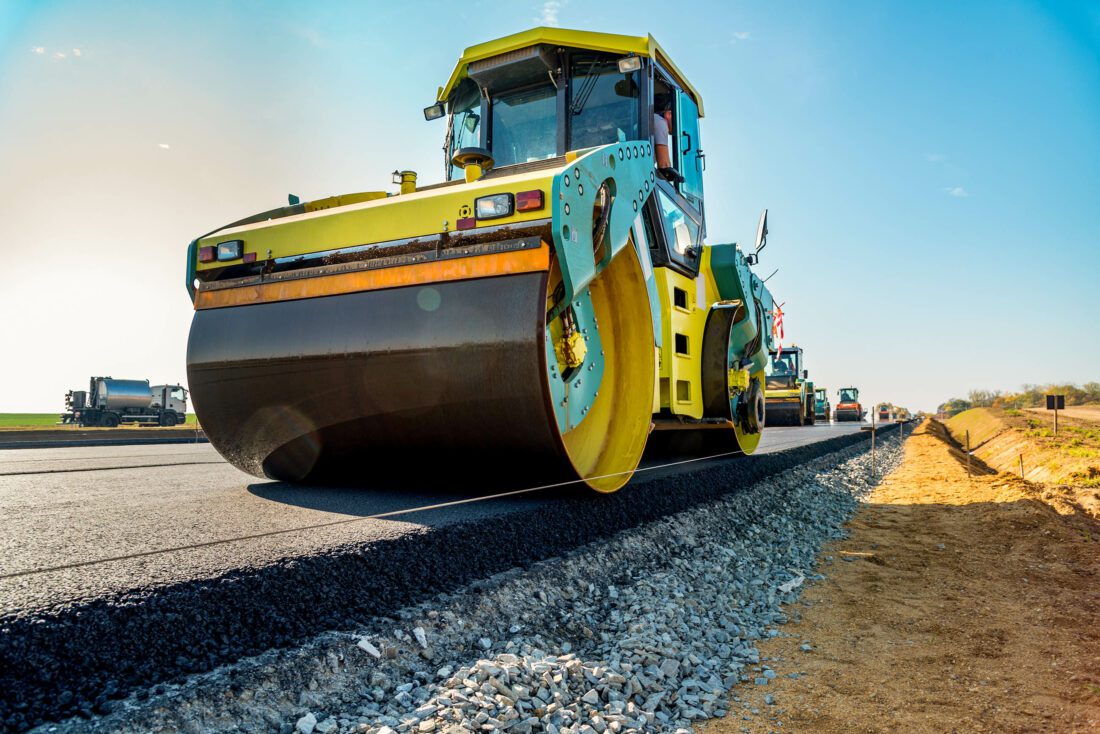All About Pavers, Scrapers, and Graders
How They Work—and Work Together—on the Jobsite
You’ve probably passed by a highway construction site and been impressed by all the heavy equipment you see. But do you ever wonder what all those machines are used for?
In this article we’ll look at three types of heavy equipment you’re apt to see at work on a road project, a building site, a mining site, or even on a farm. They work in succession to transform raw land into usable surfaces for the roads, highways, parking lots, and buildings we all use.
We’ll begin with a type of machinery that takes on the heaviest tasks…
SCRAPERS
This is the machine you want if you need to move large volumes of material from one place to another. It can move dirt from where it’s not needed to an area where it is needed—or take it to a completely different site to be dumped.
The scraper has a blade mounted on its underside which scoops up material and funnels it into a hopper (called a bowl). The material can then be taken to a dumpsite where it is released using an ejector system.
The scraper functions a lot like a bulldozer, the difference being that a scraper can move much larger amounts of material more efficiently. But a bulldozer functions better on steep terrain since it moves on tracks rather than wheels. It is also better for jobs that require some precision.
Like all heavy equipment, scrapers come in a variety of sizes and types. Here are some of the basic versions:
Single Engine Scraper
This scraper uses all its power for its earth-moving function, so it usually requires a tractor or bulldozer to push it.
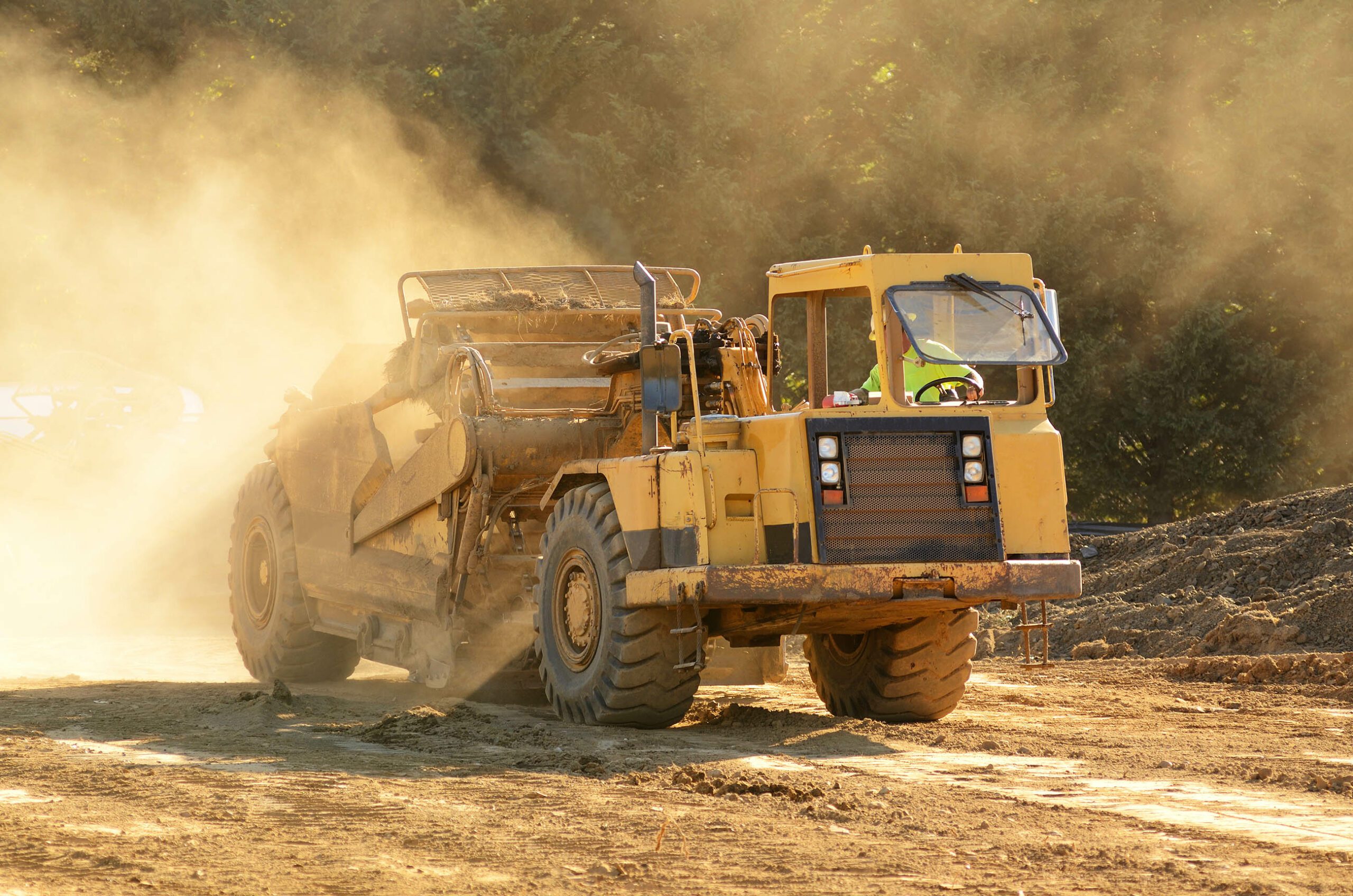
Dual Engine Scraper
With two engines, this scraper has the power it needs to propel itself. Its heavier weight also gives it more traction than the single-engine version. The engines operate in a push-pull manner; one engine pushes while the other pulls. These features, plus four-wheel drive, make the twin engine scraper especially suitable for rough terrain.
Once the scraper blade dislodges its material, the next challenge is to lift that material and deposit it into the bowl. Two scraper versions have unique ways to accomplish that:
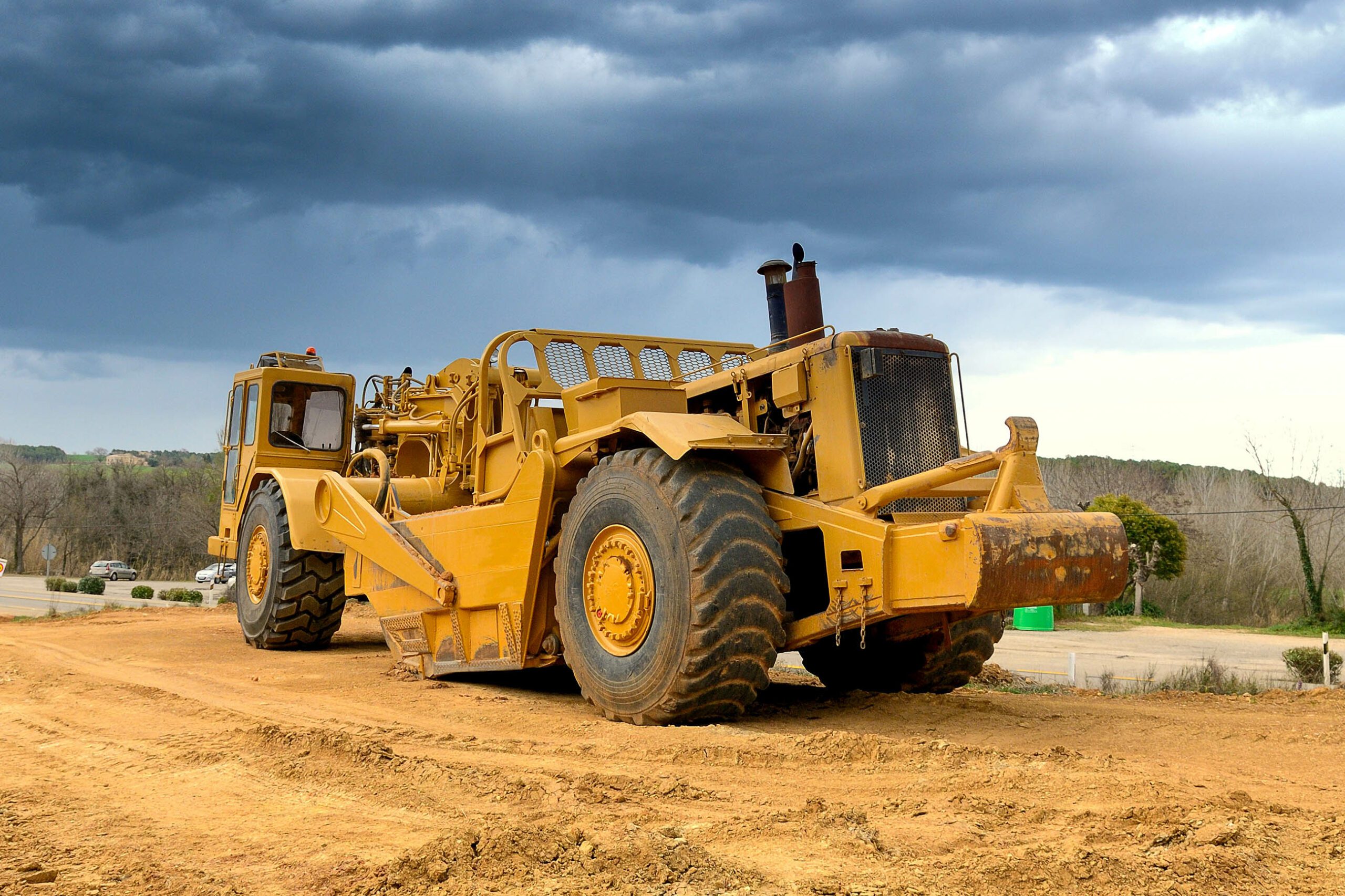
Paddle Wheel Scraper
With this approach, a hydraulic motor turns a chain connected to steel paddles much like those on a paddle wheel boat, lifting the material efficiently up and into the bowl. This scraper also has a unique way of releasing its load: the floor of the bowl simply retracts, ejecting the material onto the ground.
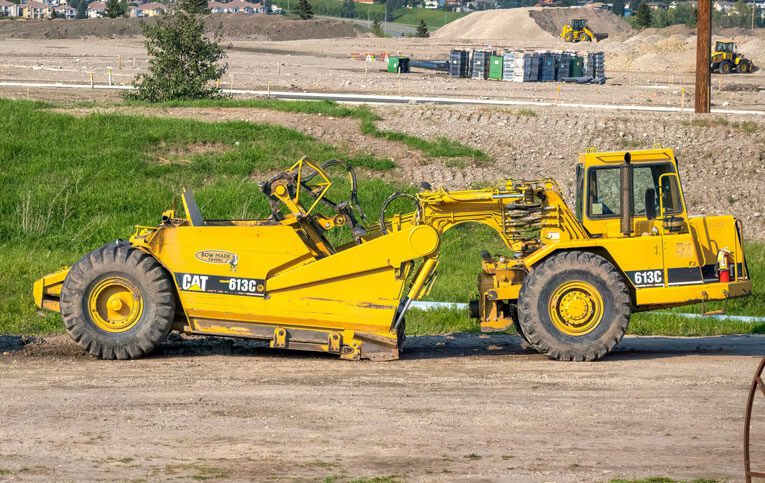
Twin-Engine Augur
This scraper version uses a hydraulically powered auger, or bit (much like a drill bit), which rotates, raising the material up and into the bowl. Clay and other sticky substances can get clogged in the auger, so this scraper is used mainly for sand or similarly non-sticky materials.
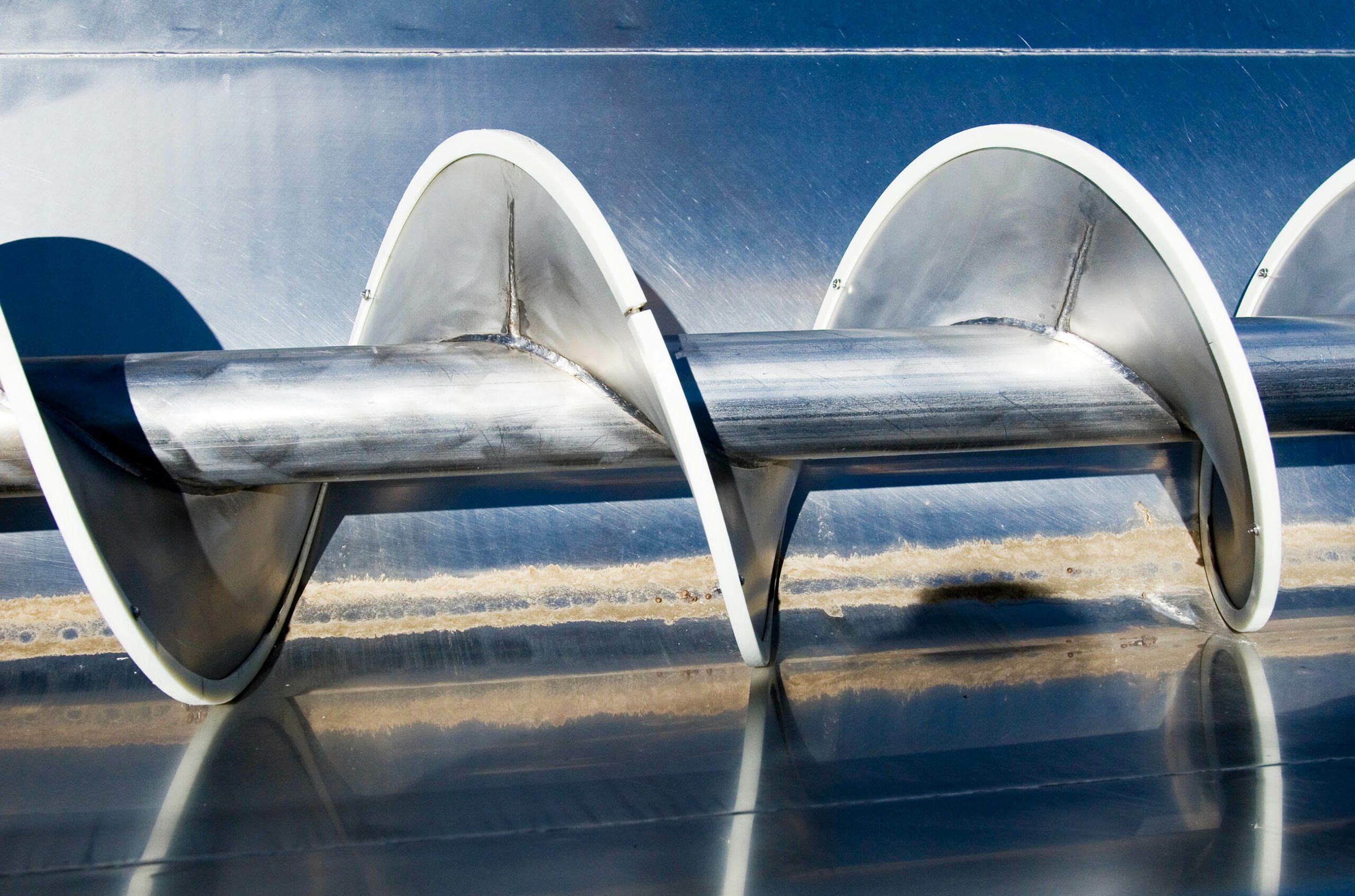
Scrapers are often used in tandem for what is known as a push-pull approach. A lead scraper takes on the task of removing the material while the rear scraper does the pushing. Then the roles are reversed, and the rear scraper takes the lead. This is an effective way of accomplishing large scraping tasks.
Once the bulk of material at a construction or maintenance site has been removed, the next step is to grade the surface in preparation for applying asphalt, concrete, or other material. That’s where another piece of heavy equipment comes in…
GRADERS
Sometimes referred to as motor graders or road graders, these machines are used to create the flat, smooth surfaces needed for highways, building sites, and other projects. They can also be used to maintain unpaved roads, to prepare land for farming, or to remove unwanted snow or dirt.
A grader has a large, adjustable blade located between the front and rear axles, which can flexibly rotate, lift, or extend. These features enable it to create any desired grade with extremely fine precision.
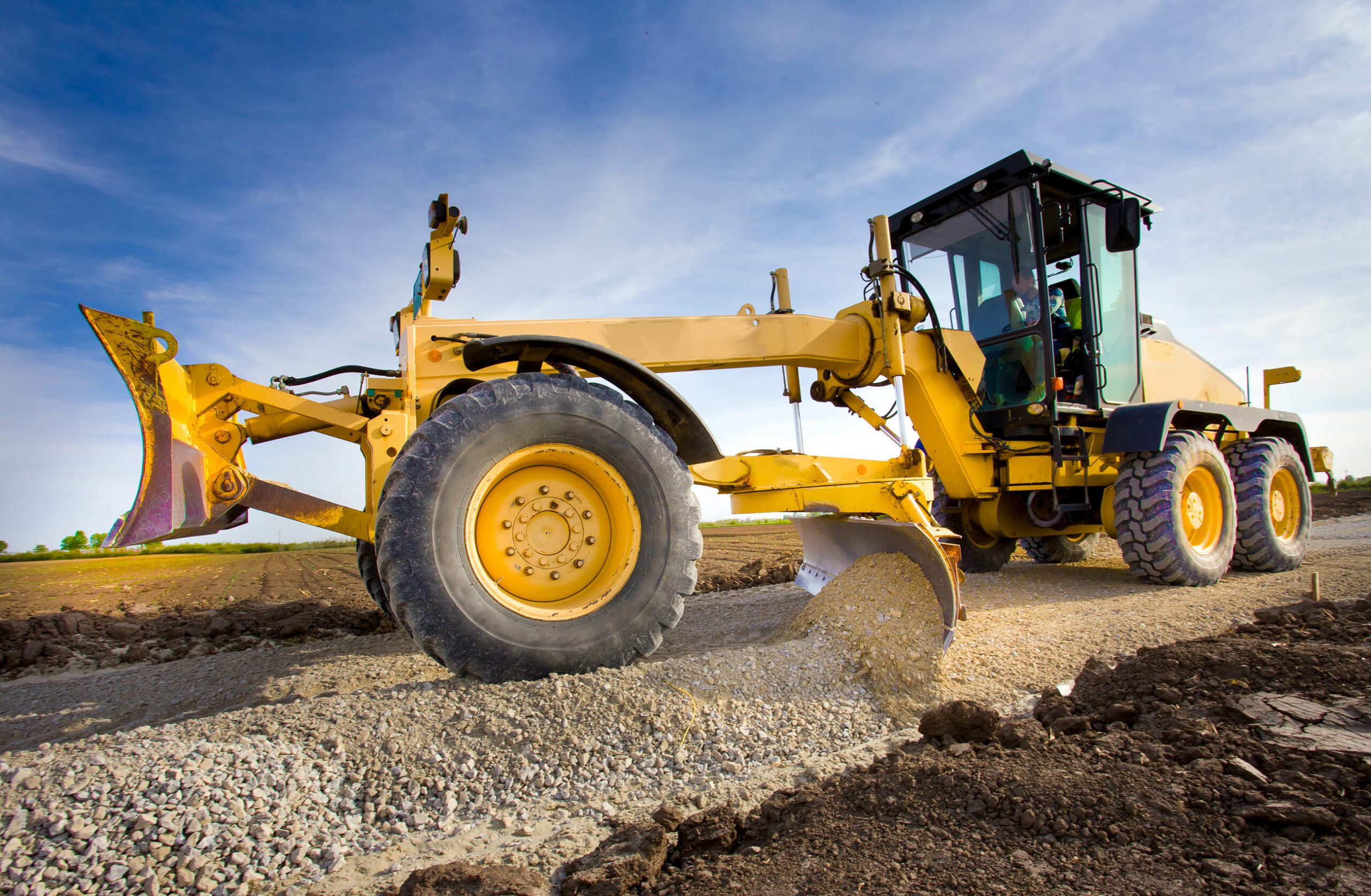
Once a piece of land has been graded for construction of a road or highway, it’s time to bring in the next piece of large equipment to complete the job:
PAVERS
Pavers, otherwise referred to as asphalt pavers, provide the final component in a new road, highway, or parking lot. They have a feeding apparatus, called a hopper, into which a dump truck continuously loads asphalt. A conveyor then carries the asphalt from the hopper to an auger, which places it in front of the screed—a free-floating device that spreads the material and smooths it out. The paver is typically followed by an asphalt compactor to provide the finishing touches. The result is the smooth, even asphalt surfaces we’re all familiar with.

These are the awesome machines that help to create the roads, building sites, and parking lots we use every day.
What About Training for Equipment Operators?
Under current U.S. law, no special certifications are required to operate the scrapers, graders, and pavers described here. Traditionally, construction employees have worked their way up to positions that involve the operation of these types of equipment. And as with so many other fields today, there are schools that offer training and certification for each of them. A commercial driver’s license may be required to operate some heavy equipment, such as cranes and towers. And employers may call for a high school diploma as a basic requirement.



